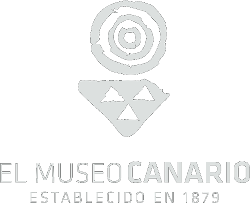The necropolises of the ancient canaries were located in areas close to the places of residence and were employed over successive generations. They therefore constituted burial spaces of a collective nature, welcoming a significant number of individuals who in life shared the places of habitat and who maintained social, economic, etc.
The social differences existing within the prehistoric population of Gran Canaria were projected in the burial deposits, thus being documented clear dysimetry in the treatment conferred on the subject after his death, in the constructive characteristics of the burial structures that welcomed them or in the internal organization of these spaces, this being a way of guaranteeing the reproduction of such social planning.
The model of the mound of La Guancha (Gáldar) and the recreation of a burial cave in the room illustrate these funeral practices.
Another topic covered is the reference to paleopathological studies, which allow to determine the diseases and injuries of ancient populations and, from their historical interpretation, to reconstruct their ways of life. Fractures, joint degenerative diseases – some associated with the frequent development of certain activities – tumors, etc. are some of the pathologies that are shown, also resulting in a practice such as trepanation, of an unclear purpose.

